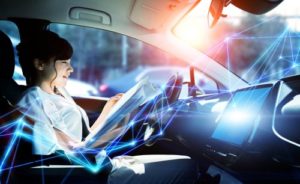
As automakers implement advanced safety features into new vehicles, the question remains whether consumers will embrace them. When J.D. Power released its 2019 U.S. Tech Experience Index Study, the report noted that a significant number of drivers are disabling certain key driver safety systems on new vehicles.
Read more about the Top 10 Safety Features of the 2019 vehicles.
Driver safety systems are developed in the hopes of preventing collisions or reducing the damage and injuries a crash can cause. When drivers choose to disable these systems – whether for personal comfort, performance and handling, or another reason – they are willingly choosing to turn off a system that could prevent a crash, avoid severe injuries, or could save a life.
Types of Driving Assistance Technology in Newer Cars
Safety systems in new vehicles can vary depending on the manufacturer and the model involved. One of the most common features that has been implemented in recent years across the industry is adaptive cruise control, which can accelerate or decelerate based on the closeness and speed of other vehicles that the system detects.
Automatic emergency braking and automatic parking are also common new features, as are blind spot detection and collision avoidance systems. Driver drowsiness detection, GPS navigation, and lane departure warning systems are also new driver assistance systems that are becoming more common on vehicles coming off the production line.
Features That Drivers Are Ignoring or Turning Off
CNBC reported that lane-keeping and centering systems were one of the most common reasons for driver dissatisfaction, with 23 percent of customers complaining that the alerts for the systems were “annoying or bothersome.” Only 21 percent of people did not consider such system alerts to be “annoying or bothersome,” but 61 percent reported disabling systems because of the dissatisfaction.
Kristin Kolodge, executive director of Driver Interaction & Human Machine Interface Research at J.D. Power, said in a statement that consumer criticism of driver safety systems indicated a possible reluctance to self-driving vehicles. “If they can’t be sold on lane-keeping — a core technology of self-driving — how are they going to accept fully automated vehicles?” she said.
Many drivers may also ignore or disable other systems such as blind-spot monitoring, automatic emergency braking, adaptive cruise control, and others.
According to Automotive News, CEO of the Center for Automotive Research Carla Bailo said one problem is that many people simply do not understand how driver safety systems operate. Lack of understanding about how to change the settings leads to most people simply disabling important warnings rather than attempting to modify them.
Contact Ruloff, Swain, Haddad, Morecock, Talbert & Woodward, P.C. for Help After a Car Accident Involving Driver Assistance Technology
If you were involved in a motor vehicle accident caused by another driver’s negligence in the greater Virginia Beach area, turn to the attorneys at Ruloff, Swain, Haddad, Morecock, Talbert & Woodward, P.C. for the qualified legal assistance you need and deserve.
For more than 30 years, our firm has helped those who’ve been hurt in car accidents in Virginia Beach and surrounding areas. Our team has seen the impact new technology has had on vehicle safety, and how it has contributed to accidents in some cases.
We will provide a free, thorough evaluation of your case and will discuss all of your legal options as soon as you call us or contact us online.
